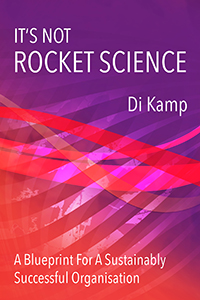We tend to think of being caring with others at work as being ‘soft’, and not very business-like. I don’t know where we got this from, since we all like to be cared for, and we spend a lot of our time at work, so some caring there is a delightful extra!
I remember my first visit to a particular manufacturing company. I was escorted round the factory by one of the manufacturing directors. It took us quite a while to go round, because he stopped and spoke with so many of the people working there. He knew the names of everyone who worked in his area of the business, but more than that, he knew what was going on in their lives, and could sense what sort of mood they were in, and gear his greeting to them accordingly. He cared – not in a ‘soft’ way, but in a way that made his people feel valued, and motivated.
When I worked with the company, I realised the level of loyalty and commitment that he had created. His name always made people smile, and these macho men would declare that they loved working for him.
This caring came naturally to him – it just seemed to be the obvious thing to do! And it produced very noticeable results for the business. His area stood out in the business for low absence, low turnover of staff and high quality standards, and one of the tasks I had been given as a consultant was to discover why there was this discrepancy between his area and others!
I am still shocked that we don’t generally show the same degree of humanity at work as we do at home, because somehow we have come to think of it as a weakness. Yet all of us prefer to be treated like human beings and respond more positively to someone who shows some care for us as individuals. It is time this myth of being business-like – or is it robot-like! – at work was dispersed, and we all allowed ourselves and others to be real feeling caring human beings.
We don’t have to be ‘soft’. We are sometimes quite tough with our children, our friends, but underlying the toughness is a desire for the best for them, to help them to be at their best. Why not apply the same principle to the workplace? It would make it so much more likely that our staff gave of their best at work, and it would make us feel more human and cared for as well.



